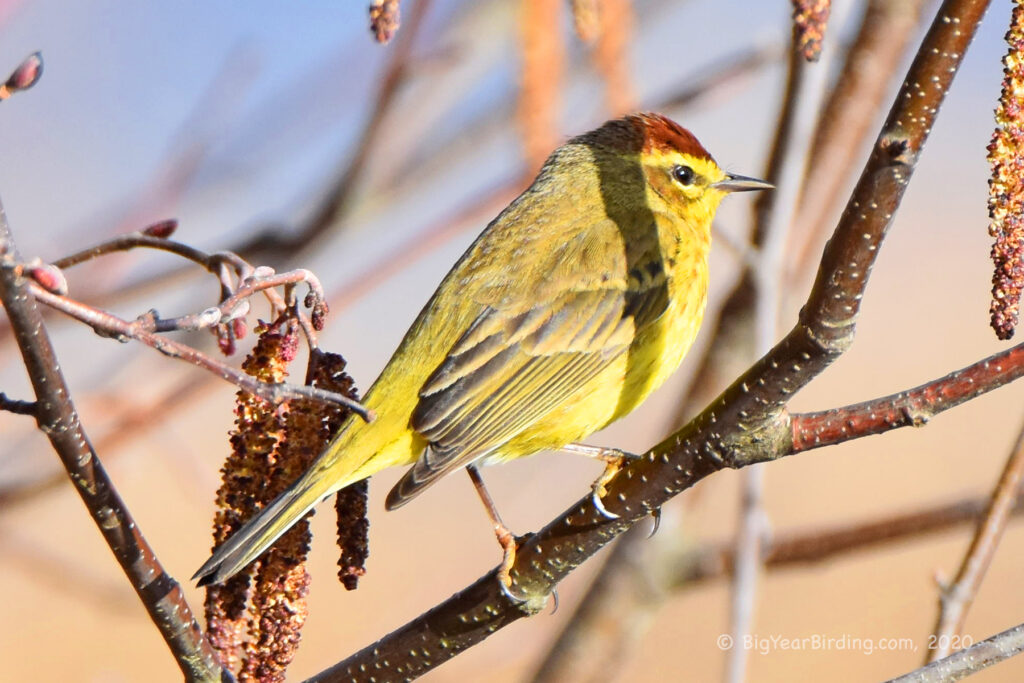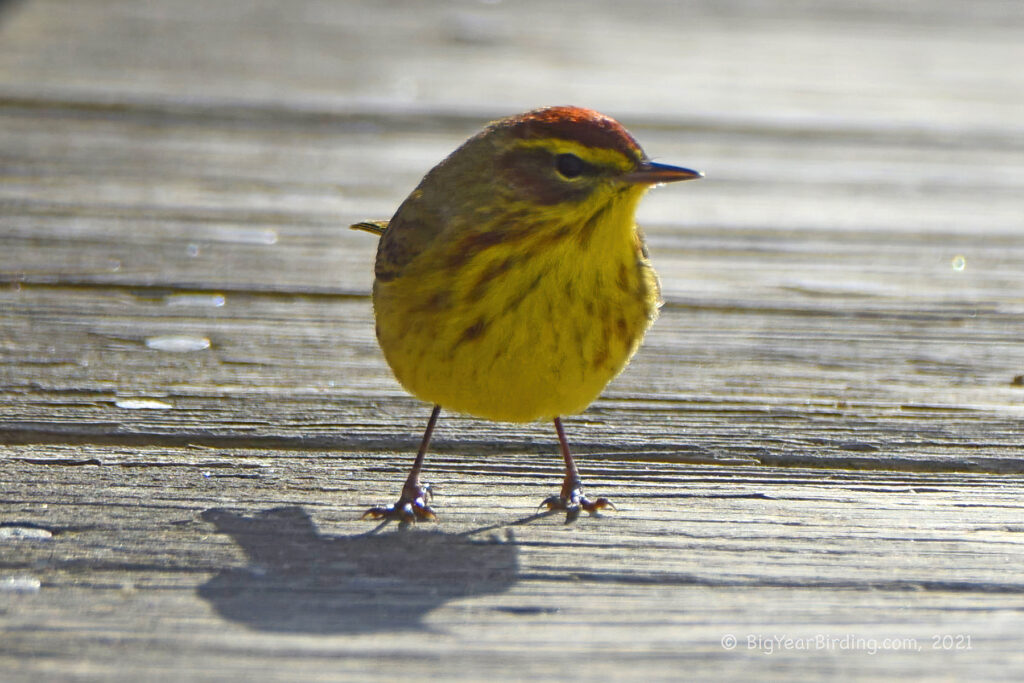
The Palm Warbler is a small migratory bird that is commonly found in North America. It measures around 5.5 inches in length and weighs approximately 0.4 to 0.5 ounces, making it one of the smallest warblers in North America. The Palm Warbler has distinguishing field marks such as its rusty brown cap and a bold eye-ring. Its breast and underparts are a yellowish color, while its back and wings are brownish-olive with streaks.

The Palm Warbler is a long-distance migrant, with its breeding range in the boreal forests of Canada, Alaska, and the northeastern United States. During the fall migration, these birds can be found in the southeastern United States and the Caribbean, while in winter, they can be seen in the southern United States, Mexico, and Central America. They are known to travel up to 2,500 miles between their breeding and wintering grounds.
During migration, the Palm Warbler can be found in a variety of habitats such as open woodlands, shrubby fields, and wetlands. They are also known to forage on the ground, often flicking their tails while searching for insects and seeds. This behavior, along with their bold eye-ring and rusty cap, helps distinguish them from other warblers.
The Palm Warbler is a primarily insectivorous bird, but during the winter, it may also consume berries and seeds. These birds are monogamous, and pairs form on the breeding grounds. They build their nests in low vegetation or on the ground, and the female lays a clutch of 4-5 eggs.

Overall, the Palm Warbler is a fascinating and unique species that is known for its distinctive markings and long-distance migration. Its small size, bright colors, and ground-foraging behavior make it a favorite among birdwatchers, especially during migration when it can be seen in a variety of habitats across North America.

